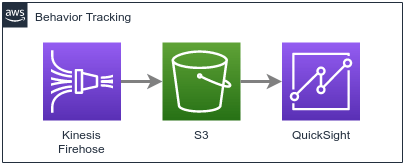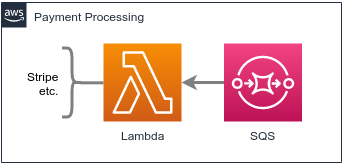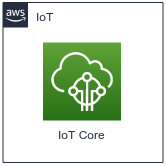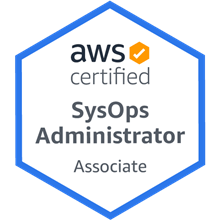Cloud Native
Unpacking my ‘go-to’ architecture for cloud-optimized applications.

This architecture reflects my current technical acumen and business philosophies:
- Customer is most important person in the room
- Do more with less
- Secure by design
- Learn & apply
- Follow the data
- Simplicity accelerates
I use it within my own projects — and as a baseline for related consulting work.
It’s an ideal — secure, performant and modular — platform for delivering:
- Single-page applications (Angular, React, etc.)
- Multi-page/traditional apps (Django, Rails, Tomcat, etc.)
- Static and dynamic websites, ecommerce sites, etc.
- Media assets (streaming, live, etc.)
Inspired — and perpetually evolving — from AWS reference architectures and cloud native best-practices:
- Containers
- Microservices
- Continuous Delivery
- DevOps
And continuously validated against the AWS Well-Architected and NIST Cybersecurity frameworks.
Push-Button Deployment
Maintained in a library of CloudFormation templates and deployable on-demand — as individual modules or end-to-end.
Design Considerations
- Why not TerraForm? CloudFormation covers everything required in a universal format (
YAML/JSON), so there is no compelling reason to take on the added costs and complexity of a 3rd-party tool - Why AWS? In a word…ecosystem. The breadth and quality of services, coupled with their integration, provide the most compelling business case. And after working with nearly all of AWS’s services over the past 10+ years — and applying their published best practices and reference architectures — AWS has earned my trust…and my business. I’ve also used GCP and Azure quite a bit, but have always ended up back on AWS due to performance or architectural reasons.
The Bigger Picture
This architecture also fills a key role in a more comprehensive cloud strategy:
So let’s dive in…

Core Components
At the core, we need a method for securely storing and rapidly delivering web content to end users, and we do that through:
- CloudFront — Fast content delivery network (CDN)
- Simple Storage Service (S3) — Primary storage for static assets (CloudFront Origin)
- Lambda@Edge — Add Content Security Policy (CSP) headers to responses, A/B testing and CloudFront Origin determination
- Certificate Manager (ACM) — SSL certificate for data in-transit encryption, configured in CloudFront and API Gateway
- Route 53 — Public-facing DNS, including transfer between environments during deployments
- Web Application Firewall (WAF) — Rules engine for blocking malicious traffic on CloudFront, Route 53 and API Gateway
- Shield — DDoS protection on CloudFront and Route 53
- Key Management Service (KMS) — Cryptographic key management for encrypting data at-rest on S3
- API Gateway* — Primary entry point for client access to microservices
- Virtual Private Cloud (VPC) — Network-level isolation of resources and traffic (including Security Groups, NACLs, NAT, Route Tables, etc.)
- CloudWatch — Collect and store logs from S3, API Gateway, Route 53 and Lambda
* only required with expansion modules
This highly optimized pipeline pushes static assets (HTML, CSS, JS) right to users’ front door; providing an optimal experience around the globe.
Expansion Modules
With this solid foundation in place, we can easily enhance functionality using a number of different add-on microservices:
- User Management
- Behavior Tracking
- Payment Processing
- Media Management
- Bespoke Inference
- Bespoke Computation
- IoT Device Management
Let’s dive a little deeper into those modules…

User Management Service
Add-on microservice that integrates user registration, authentication, authorization into the application.
- Cognito — Web federation with built-in registration and sign-in web pages
- Route 53 — Domain name for Cognito-provided registration and sign-in page
- Certificate Manager (ACM) — SSL certificate configured in Cognito
- CloudWatch — Collect and store logs from Route 53
Providing granular control over user permissions.

Tracking Service
This add-on module enables a microservice for capturing user behavior within the application.
- Kinesis Data Firehose — Ingest raw data
- Kinesis Analytics — Anomaly detection
- Lambda — Serverless computation for transforming or appending data
- Simple Storage Service (S3) — Primary data storage
- QuickSight — Dashboard for analysis
- Key Management Service (KMS) — Cryptographic key management for encrypting data at-rest on S3
Clickstream intelligence pipeline, recording and analyzing user behavior.

Payment Processing
This add-on module enables a microservice for payments within the application.
- Lambda — Interact with payment gateways
- DynamoDB — Log payment activity
- Simple Queue Service (SQS) — Decouple payment from ordering process
- CloudWatch — Collect and store logs
Requires a payment processor, e.g. Stripe.
For example:
- Ecommerce applications
- Content subscriptions

Media Service
This add-on module enables a microservice for efficient delivery of video and other media.
- Simple Storage Service (S3) — Primary data storage for pre- and post-processed media files
- MediaConvert — Transcode media into optimized versions
- Key Management Service (KMS) — Cryptographic key management for encrypting data at-rest
Media optimization and delivery, for example:
- Training courses
Includes a pipeline to optimize video delivery for each device.

Inference Module
Add-on microservice providing custom decision automation.
- SageMaker — Machine learning workflow
- CloudWatch — Collect and store logs
Custom machine learning models, for example:
- Personalize search results
- Predictive user behavior
- Image/video analysis

Computation Module
This module lays down the infrastructure required to deploy custom-developed microservices running in containers, serverless functions or virtual machines.
- Application Load Balancer (ALB) — Terminate SSL and address translation
- Web Application Firewall (WAF) — custom rules to block malicious traffic on ALB
- Certificate Manager (ACM) — SSL certificate configured in ALB
- Fargate — Automated deployment and management of ECS cluster
- Elastic Container Service (ECS) — Run and manage Docker containers
- Elastic Container Registry (ECR) — Docker container registry
- Lambda — Run serverless functions
- Simple Queue Service (SQS) — Dead Letter Queue (DLQ) for Lambda
- Elastic Compute Cloud (EC2) — Run and manage virtual machines
- CloudWatch — Collect and store logs
Proprietary software deployment running on various languages, e.g. Django, Rails, Tomcat, etc.
Design Considerations
- Why not Kubernetes? ECS provides better integration with overall solution and more extensive automation (managed service)
- I typically prioritize these by: Lambda, ECS, EC2 — for a number of reasons, including security risk (EC2 is typically highest risk)

Internet of Things (IoT) Module
This add-on module enables a platform for managing IoT devices.
- IoT — Primary gateway for device management
- CloudWatch — Collect and store logs from IoT
Extend the application to remote industrial, consumer and commercial cloud-connected devices.










